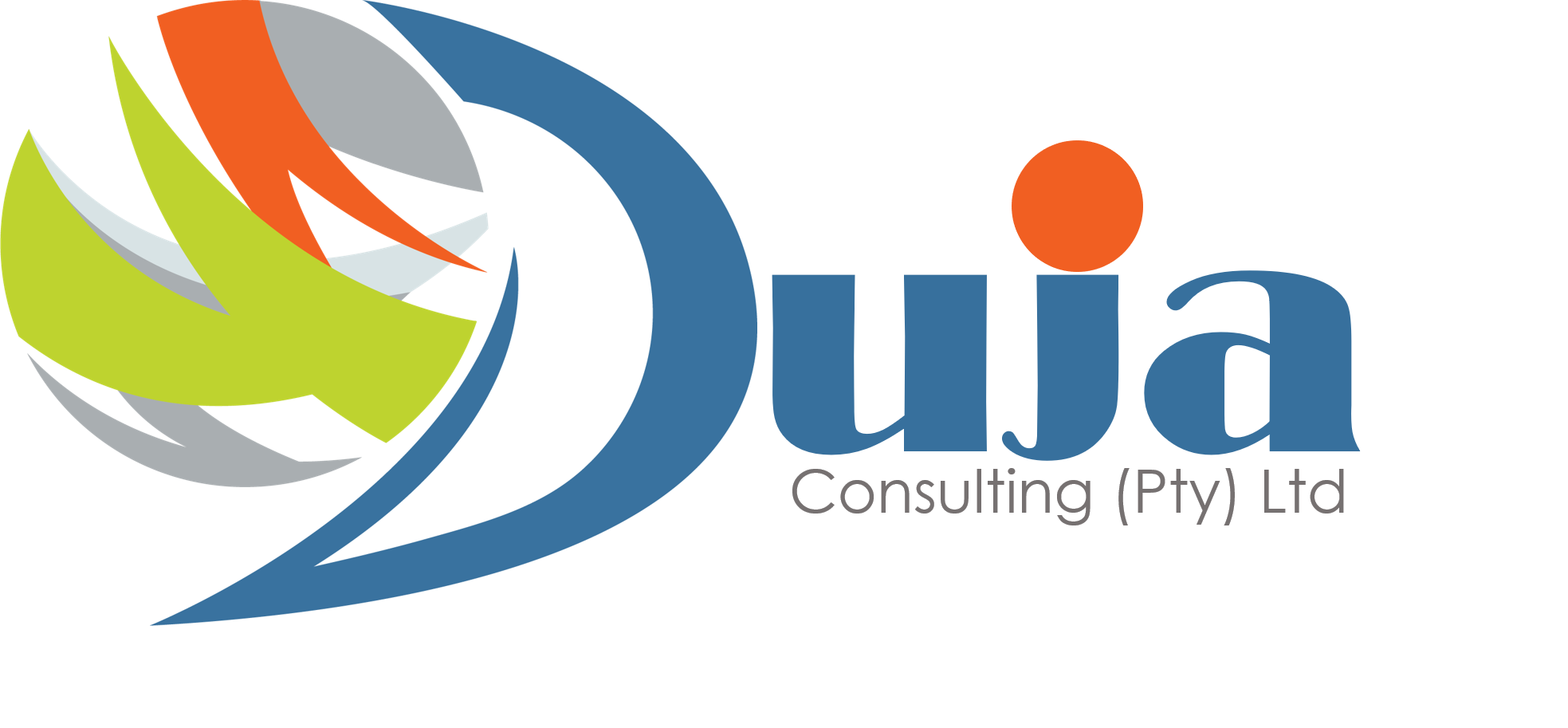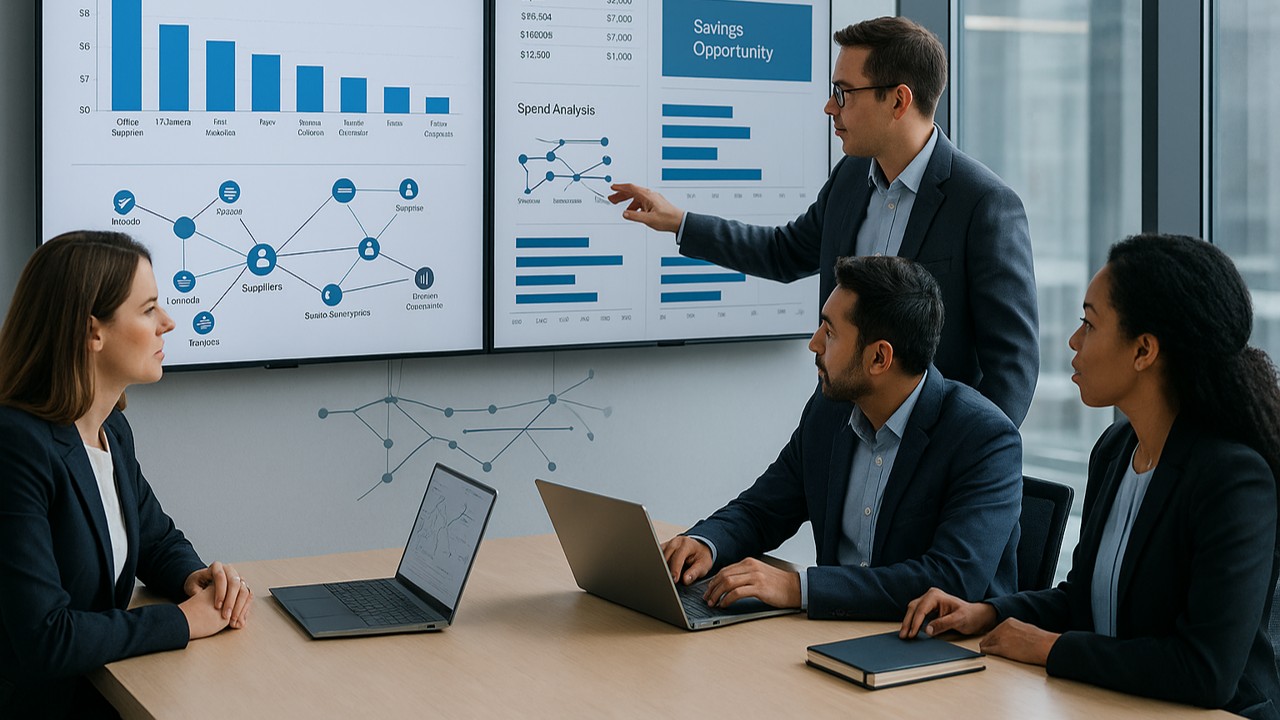Using Procurement Analytics to Identify Savings
Procurement teams are under pressure to “find more savings” in categories that already feel fully negotiated. Often, the problem is not effort – it is visibility.
We have published a new Duja Consulting article on “Using Procurement Analytics to Identify Savings” that shows how to:
- Build a reliable spend data foundation
- Uncover hidden savings in tail and maverick spend
- Use detailed insights to negotiate with precision
- Look beyond unit prices to true cost and demand drivers
- Turn predictive insight into proactive action and measurable impact
If you are a finance, procurement or operations leader who suspects there is still value hidden in your spend, this piece is for you.
If you would like to explore how Duja Consulting can help you harness procurement analytics in your organisation, feel free to reach out.

Using Procurement Analytics to Identify Savings
How to harness data to uncover hidden savings opportunities that traditional approaches often miss
Introduction: when “we already negotiated hard” is not enough
Most procurement leaders feel they have already squeezed the obvious savings out of their spend. Major categories have been tendered, contracts renegotiated and suppliers rationalised. Yet finance teams still see leakage, unplanned overspend and growing pressure on margins.
The gap usually lies not in effort, but in visibility. Traditional approaches rely on limited reports, fragmented systems and intuition. Procurement analytics changes that equation. By consolidating, cleansing and analysing spend and supplier data, organisations are finding savings of ten to fifteen per cent of addressable spend, while also improving supply chain efficiency, according to global research. McKinsey & Company+1
This is not about buying another dashboard to admire. It is about turning raw data into specific, actionable insight that points directly to where money is being left on the table: inconsistent prices, unnecessary variety, poor compliance with contracts, weakly negotiated terms and unproductive suppliers.
This article explores how to harness procurement analytics to reveal those hidden savings opportunities, step by step – and how Duja Consulting would advise organisations to embed this capability as part of a modern, proactive procurement strategy.
1. What procurement analytics really is – and why it matters
Procurement analytics is the discipline of using data to understand and improve how your organisation buys goods and services. It combines spend analysis, supplier and contract performance evaluation, risk indicators and market data into one coherent view. Art of Procurement+1
Done well, it answers questions that traditional reporting cannot:
- What are we really buying, from whom, at what price – and how does this vary across the business?
- Which categories and suppliers offer the largest untapped savings potential, once we look beyond headline prices?
- Where is spend leaking outside agreed contracts and processes?
- Which suppliers are creating value, and which are quietly eroding it through delays, quality issues or hidden charges?
Modern procurement analytics platforms go further by linking savings opportunities to realised financial impact and broader objectives such as risk reduction and environmental responsibility. Sievo+1
The result is a shift from reactive cost cutting to continuous value optimisation: procurement stops being a once-off saving project and becomes an ongoing, data-driven management discipline.
2. Build the data foundation: accurate, complete and well-classified spend
Most procurement analytics initiatives succeed or fail on the quality of their data. Multiple systems, inconsistent supplier names, free-text descriptions and missing information make it difficult to see the full picture of spend. That is why the first step is almost always a rigorous spend analysis. Sievo+2Ivalua+2
Key actions include:
- Consolidate data sources
Bring together data from enterprise resource planning systems, purchase-to-pay platforms, finance ledgers, expense systems and even manual logs. Every route through which money leaves the organisation should be visible in one place. - Cleanse and normalise
Standardise supplier names, units of measure, currencies and tax treatments. This removes the noise that disguises true volumes and prices. - Classify spend consistently
Apply a robust, hierarchical taxonomy to classify each transaction into categories and sub-categories. Automated classification tools can accelerate this process, but human review is still critical for accuracy. - Enrich with additional attributes
For each line of spend, capture as much relevant information as possible: payment terms, contract identifiers, business unit, cost centre, requester, location and specification parameters where available.
With this foundation in place, you can see – often for the first time – exactly what is being spent, where and why. Only then does it become possible to identify patterns that signal hidden savings opportunities.
3. Shine a light on hidden and “dark” spend
Once spend data is clean and classified, the first, and often easiest, savings opportunities come from revealing spend that has previously sat in the shadows. Tail spend, small suppliers, once-off purchases and maverick buying can all erode margins quietly. Efficient CapEx Procurement+2ProcureDesk+2
Procurement analytics can help you to:
- Identify maverick spend
By comparing actual purchasing behaviour with approved contracts and catalogues, analytics highlights off-contract items, unapproved suppliers and purchases that bypass formal processes. These transactions often carry higher prices and poorer terms. - Consolidate tail suppliers
Many organisations have hundreds or thousands of suppliers with low annual spend. Analytics helps you cluster this spend by category and identify consolidation opportunities that reduce administrative overhead and unlock better volume discounts. - Spot duplicate or overlapping suppliers
Cleansed supplier data often reveals multiple suppliers providing similar goods or services, or even the same supplier trading under different legal entities. Consolidation can deliver immediate savings and stronger buying power. - Detect unusual patterns and anomalies
Outlier analysis can reveal unusual item descriptors, suspicious quantities or repeated small purchases that collectively represent significant leakage.
The key is not merely to produce a report, but to convert these insights into specific actions: migrate purchases to preferred contracts, close redundant suppliers and tighten approval processes around known leakage points.
4. Use category and supplier insights to negotiate with precision
Traditional negotiations often start with a limited view: headline spend per supplier and a rough sense of market prices. Procurement analytics changes the dynamic by equipping your negotiators with detailed, fact-based insights.
Analytics can show, for each category and supplier: volumes by item, site and business unit; historical price movements; adherence to price lists; and comparison with peer suppliers in the same category. Sievo+1
Advanced approaches bring in external information such as supplier profitability and your share of that supplier’s overall turnover. A higher share of wallet combined with strong supplier margins indicates considerable leverage to secure better pricing or improved terms. Ignite+1
Practical examples include:
- Demonstrating that one location is paying significantly more than others for identical items from the same supplier.
- Showing that your volumes have grown well beyond the assumptions used when prices were originally set, justifying a re-base.
- Using basket analysis to propose a win-win arrangement: shifting more volume to a preferred supplier in exchange for improved overall pricing.
This level of transparency moves conversations away from opinions and towards objective facts. It also shortens negotiation cycles, because both parties can see clearly where there is room to move.
5. Look beyond the sticker price: total cost and demand drivers
The most powerful savings opportunities often do not lie in the unit price at all. They sit in specifications, consumption patterns, and the broader end-to-end process. Procurement analytics helps you to uncover these hidden levers.
By combining spend data with operational information – such as usage rates, downtime, maintenance schedules and service levels – you can analyse the total cost of ownership of a product or service, not just what is paid upfront. Amazon Business+1
Common examples include:
- Specification rationalisation
Analytics may reveal an unnecessary variety of similar items: slightly different packaging, colours, grades or technical specifications. Reducing this variety simplifies inventory and unlocks better prices through standardisation. - Demand management
Consumption-based analysis can identify departments or sites with unusually high usage per output unit. That is often a sign of waste, poor controls or out-of-date processes. - Process cost drivers
Service contracts with high call-out charges may look expensive, but if data shows low call volumes and fast resolution, they may be more cost-effective than cheaper but less reliable alternatives that cause more downtime. - Hidden fees and surcharges
Detailed invoice analytics can uncover recurring handling fees, premium delivery charges or other add-ons that can be renegotiated or avoided with better planning.
By shifting the conversation from “price” to “total value and cost over time”, procurement teams can find savings that traditional negotiation alone would never reveal.
6. Apply predictive and prescriptive insight for proactive savings
Descriptive analytics tells you what has happened. Predictive and prescriptive analytics help you anticipate what will happen and what you should do about it.
Predictive models use historical data to forecast demand, identify patterns in supplier performance and anticipate where future risk or cost inflation is likely to appear. In procurement, this can mean forecasting price movements in key commodities, anticipating seasonal spikes in demand, or spotting early warning signs of supplier distress. ControlHub+2SpendEdge+2
Prescriptive analytics goes a step further, recommending actions based on this foresight.
For example, an artificial intelligence-enabled procurement platform can:
- Recommend issuing a tender earlier than usual to avoid a projected price increase.
- Suggest alternative suppliers where delivery risk is rising due to geopolitical events or financial stress. penny. software+1
- Highlight where splitting a contract between multiple suppliers would reduce risk while maintaining competitive pricing.
Global studies indicate that organisations using these advanced techniques can reduce procurement costs by double-digit percentages while significantly improving supply chain resilience and efficiency. LinkedIn+1
The practical message is simple: predictive and prescriptive analytics move procurement from reacting to events to actively shaping outcomes.
7. Optimise payment terms and working capital
Savings are not only about paying less per unit; they are also about how and when you pay. Procurement analytics can reveal patterns in payment behaviour that impact working capital and the effective cost of goods and services.
By linking invoice data to contract terms, you can see:
- Where the organisation is failing to take advantage of early-payment discounts.
- Where suppliers routinely enjoy earlier payment than contracted, effectively granting them free financing.
- Which suppliers may be willing to trade improved payment terms for better prices, or vice versa, based on your relative importance as a customer and their financial position.
Combining this with cash-flow forecasting allows finance and procurement to design payment strategies that minimise the total cost of ownership while supporting critical suppliers. Savings can arise from reduced interest costs, captured discounts and elimination of avoidable penalties.
The key is to treat payment terms as a strategic lever supported by data, not an afterthought at the end of a negotiation.
8. Close the gaps: contract compliance and leakage
Even the best-negotiated contract generates no value if the business does not actually buy through it. Contract leakage – where purchases occur off-contract or on the wrong terms – quietly erodes the savings that procurement worked hard to secure.
Procurement analytics enables continuous monitoring of contract compliance by automatically comparing live spend data against contracted items, prices and terms. Zycus+1
This allows you to:
- Measure compliance at category, supplier, site and requester level
You can see exactly where off-contract buying is happening and how much it is costing. - Identify policy gaps
Persistent non-compliance may indicate that catalogue content is outdated, service levels are not fit for purpose or approval limits are misaligned with real-world needs. - Enforce pricing
Automated alerts can flag when invoiced prices differ from agreed price lists, enabling quick correction before overpayments accumulate. - Feed insights back into sourcing
Understanding where and why leakage occurs helps you design future sourcing events and contracts that better fit the organisation’s actual buying patterns.
By closing these gaps, organisations often realise a significant portion of “paper savings” that would otherwise remain theoretical.
9. Evaluate supplier performance and risk with a savings lens
Supplier performance is often viewed through a narrow lens of on-time delivery and quality. Procurement analytics broadens this view to include the full economic impact of supplier behaviour.
By combining internal performance data with external indicators – such as credit risk, regulatory findings or environmental performance – procurement teams can identify suppliers that create hidden costs or risks. McKinsey & Company+1
Examples of analytics-driven insights include:
- Suppliers with acceptable prices but poor reliability that forces you to hold excessive safety stock.
- Service providers whose slow response times cause revenue loss or productivity impacts far greater than the cost of their invoices.
- Suppliers whose environmental or social performance creates reputational and regulatory risk, potentially leading to fines, project delays or customer churn.
Conversely, analytics can highlight high-performing suppliers who deserve more volume, longer-term partnerships or collaborative improvement programmes.
Savings here are both direct (reduced rework, fewer disruptions) and indirect (lower risk of major incidents, stronger competitive position). By quantifying these impacts, procurement gains a stronger case for reallocating spend towards suppliers that truly deliver value.
10. A practical roadmap: from first insight to embedded capability
The potential of procurement analytics can feel overwhelming. The most successful organisations start small, prove value quickly and then scale.
A practical roadmap often looks like this: Spendflo+1
- Define clear objectives
Agree with finance and business stakeholders what you are trying to achieve: immediate cost savings, better compliance, risk reduction, or all of the above. Prioritise two or three clear outcomes. - Select pilot categories
Choose categories with significant spend, fragmented supplier bases, frequent purchases or known issues. These are fertile ground for quick wins. - Conduct a focused spend analysis
Apply the data foundation steps described earlier to these categories. Identify specific opportunities: consolidation, renegotiation, demand reduction, process changes. - Translate insights into initiatives
For each opportunity, define a concrete action with an owner, timeline and expected financial impact. - Track realised benefits
Use the analytics platform to monitor progress and confirm that expected savings are flowing through to the bottom line. Simfoni+1 - Scale and industrialise
Once the pilot proves successful, extend the data model, governance and processes across more categories and business units.
This iterative approach builds confidence, skills and stakeholder support, turning procurement analytics from a one-off project into a core management capability.
11. Organise for success: people, processes and technology
Tools alone do not deliver savings. Organisations need the right combination of skills, processes and governance to translate insight into action.
Leading practice includes: Supply Chain Digital+1
- Dedicated analytics roles within the procurement function, working closely with finance and data teams.
- Clear decision rights so that when analytics reveals an opportunity, there is no ambiguity about who can approve changes to suppliers, specifications or budgets.
- Integration with strategic procurement processes, such as category planning, sourcing, contract management and supplier development.
- A culture of data-driven decision-making, where stakeholders expect to see evidence and insight underpinning proposals, not just opinions.
- Ongoing investment in data quality, including governance, standards and regular audits of key data elements.
Technology choices matter, but they should follow the needs of the process, not the other way round. Whether you deploy a full procurement analytics suite or build on existing business intelligence tools, the goal is the same: reliable, timely insight that people can act on.
12. Measuring what matters: linking analytics to real savings
Many procurement teams struggle to prove that their work translates into tangible financial results. Procurement analytics can close this gap by connecting initiatives to realised savings in a transparent way.
This involves: Simfoni+1
- Defining savings types clearly (for example, price reduction, cost avoidance, demand reduction, process efficiency).
- Establishing baselines based on historic spend and agreed assumptions.
- Tracking actual spend against these baselines at a granular level, adjusting for volume changes or business growth.
- Reconciling procurement’s reported savings with finance’s accounts, so that both functions work from a single version of the truth.
- Reporting not only on savings achieved, but on how sustainable they are and where further value can be unlocked.
When this discipline is embedded, procurement analytics becomes a powerful credibility enhancer. It demonstrates that procurement is not merely a support function but a strategic contributor to profitability and resilience.
Add Your Heading Text Here
For many organisations, the challenge is not in recognising the potential of procurement analytics, but in knowing where to start and how to avoid common pitfalls. This is where an experienced advisory partner can add significant value.
A typical Duja Consulting engagement in this space would focus on:
- Diagnostic assessment – reviewing current data, systems, processes and skills to identify gaps and quick-win opportunities.
- Spend analytics and opportunity mapping – building a cleansed, classified view of spend and converting findings into a portfolio of savings initiatives, each with estimated impact and required actions.
- Control and compliance design – aligning policies, approval workflows and contract management practices with the insights revealed by analytics, to prevent future leakage.
- Capability transfer – equipping your procurement, finance and business teams with the tools, techniques and governance needed to sustain savings over time.
Because Duja combines procurement and forensic auditing expertise, our focus is not only on planned savings but also on detecting overcharging, weak controls and potential irregularities that may be hidden in the data.
Conclusion: from one-off projects to continuous savings
Using procurement analytics to identify savings is not a technology fad; it is a structural shift in how organisations manage one of their largest cost bases. The real value lies not in the dashboards, but in the disciplined cycle of insight, action and measurable impact.
By building a strong data foundation, shining a light on hidden spend, using granular insight to negotiate with precision, looking beyond the sticker price, and embracing predictive and prescriptive techniques, procurement leaders can uncover savings that traditional approaches would never find. They can also strengthen risk management, improve supplier relationships and support broader strategic goals.
The journey does not need to be overwhelming. Starting with focused pilots, proving value and then scaling thoughtfully allows organisations to build momentum and capability. With the right combination of data, expertise and governance, procurement analytics becomes a continuous engine for savings and value creation.
For organisations that want to move quickly and confidently, partnering with a specialist such as Duja Consulting can accelerate progress and help ensure that procurement analytics delivers not just insight, but lasting financial results.


